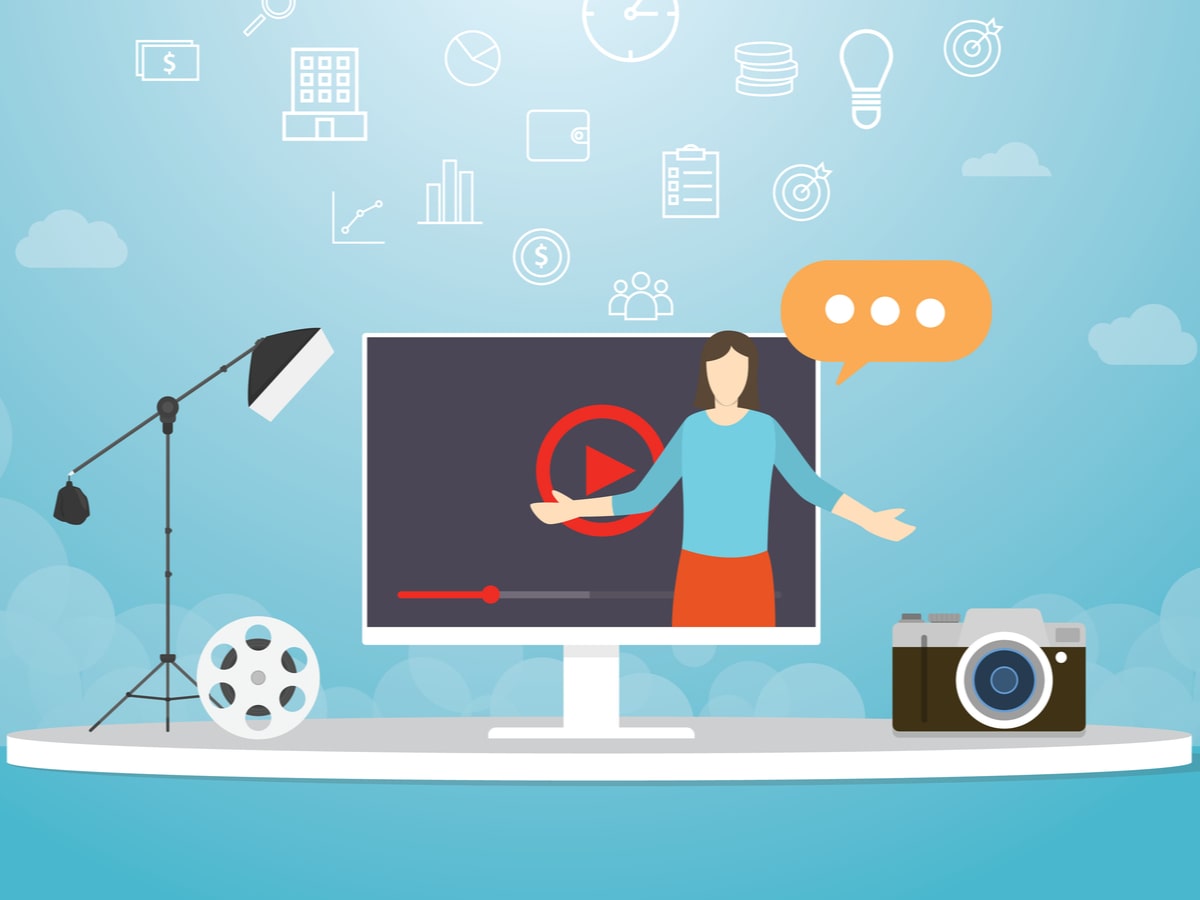Whether you’re an adult educator, a corporate trainer, or an elementary school teacher, there are many challenges. How can you achieve better outcomes when faced with slow learners on tight budgets?!? As we’ll learn in this case study from the mental healthcare sector, educational explainer videos are the best medium for teaching complex, sensitive topics.
We’ll walk through the process of identifying issues, highlighting solutions, and creating educational videos with maximum impact on the audience.
The process illustrated here is applicable to any academic or business scenario, and we’ve fictionalized its details to keep the story short.
How it all started, and why our client needed explainer videos
The senior executives at the local mental health institute had noticed a worrisome trend: Each quarterly survey showed patient outcomes and worker satisfaction were getting worse.
Communications within the organization were poor. Coworkers suffered from workplace conflict, and expensive errors were common.
Everybody was talking, but nobody was listening….
Staff communications were awful. For example, a Monday morning meeting between angry anger-management therapists turned into a caffeine-fueled brawl. Instead of listening, they “educated” each other with fists.
….or asking the right questions
Even worse, the nursing staff had suffered an embarrassing series of malpractice claims following botched treatments. They weren’t asking their patients the right questions.
Ouch!
In order to stop the bleeding, the CEO instructed his HR staff to work with our team. The mission was to create a series of educational explainer videos.
Our videos were crafted to teach staff easy-to-use questioning and listening techniques. Staff members and contractors watch them and are asked to apply their principles throughout the workday.
The learning modules outlined below were designed to teach healthcare practitioners how to use several types of questions in their daily interactions with patients and other staff.
Before diving into the case study, let’s recap the main reasons why video is the best medium for education.
Why use educational videos?
Anytime there’s a need to inform people about a new product or teach them a new idea, animated videos can help.
They’re also useful for training staff and notifying them about updated organizational policies, events, and projects.
A good team is the key to success
The key to success with any type of training or education video is to work with an experienced agency. The right team can present topics in a simple yet memorable way.
Here’s an example of a caveman-simple presentation that instantly makes its message clear –
Notice how the voiceover narrator asks a closed-end question about life insurance, and the animated character immediately answers, which leads the audience through the same mental process.
Animated characters are true “heroes” for teaching difficult topics
The other key to success is using animation instead of “live-action” videos to train people. For any kind of sensitive and complex topic, animated characters offer a non-threatening way to reach audiences.
For example, here’s a highly successful clip about the sometimes-touchy subject of family planning:
Likewise, today’s case study focuses on a project to help healthcare professionals build important skills. Animation is the ideal medium for presenting this message.
Case study: Questions are the answer for providing better mental health services
Now that we’ve sketched out the general background of business animation, let’s look at the specifics. In this case, the staff was suffering from poor communication skills.
The executive team needed to take quick action or risk losing their operating license from poor reviews. They needed a team of animation explainer experts to put a “happy face” on their workers and patients.
That’s why they called us.
The CEO made a wise choice: Rely on animated explainer videos to teach questioning and listening techniques to all staff members and contractors throughout the entire organization.
Award-winning video content was combined with followup interviews and worker counseling to resolve any lingering communications issues.
As you’ll learn below, the communications problem was resolved by using video explainers to train the staff to use simple questioning and listening methods.
The staff viewed our series of video lessons, and were later evaluated regarding their results for patient outcomes and overall satisfaction.
What was the result of this project?
The organization’s workers now provide better service to patients. Likewise, admin staff members are trained with the same video series, and they’re more productive.
Goals were achieved, the organization was healed
- Enhanced communications
- Improved patient outcomes
- Reduced workplace conflict
- Increased productivity
Overall, the results were very favorable – Productivity and patient satisfaction are both improved since the staff has better questioning and listening skills, as learned from educational training videos produced by our team.
Here’s a similar example of great educational animation for Quince Health, a health services management company:
Now let’s take a closer look at the production process for our videos. As we walk through the steps for creating top-quality business animation, we’ll continue to point out examples that show these same successful techniques used by our expert team across multiple industries.
Our process for creating the best educational explainer videos
Step 1: When the client contacted us, the first step was a discovery call with the HR training team to learn their requirements. Once our creative director understood the scope of this project, we felt very confident in delivering successful results.
Step 2: Based on the learning modules prescribed by professional educators, our team developed custom storyboards and wrote top-quality scripts for each video in the series. We made sure that the organization’s logo and branding message remained consistent throughout all content.
Step 3: We recorded voiceover and music for the videos. Although this project was executed in standard English, we also have a wide library of languages and accents to fit any project.
Step 4: Animation is always the most important part. For this project, we used a combination of animated whiteboard videos and hand drawn videos to accomplish the client’s goals.
Step 5: The completed series of training videos covered questioning techniques. We worked closely with the organization’s corporate trainers to make sure that the “final cut” of each video would bring the best results.
Step 6: The program was launched successfully. Shown to all staff members, our training videos received excellent feedback and led to impressive changes in performance.
Our team is often called to produce multiple videos for comprehensive training programs, such as for HMC Marketing:
The learning modules
- Closed-ended questioning techniques
- Open-ended questions
- Power questions
- Alternative of choice
- Echo
- Questions and silence
Let’s quickly go over each of the learning models, and look at some examples of explainer videos that demonstrate the fine art of educational animation.
Closed-end questions
For the first module, our team created a storyline for the topic of closed-end questioning, since it’s a mental healthcare worker’s most basic tool for finding information. Closed-end questions can be answered by saying “yes” or “no” alone.
Take a look at this example of a great closed question from a different industry. In this promo from XMA, the leading character’s first words are “Can my team collaborate and still be productive when working from home?”
https://www.youtube.com/watch?v=Arawg38hPys
It’s the best way to focus an audience on your chosen topic.
This type of questioning works best when a practitioner wishes to help a patient refocus on answering more narrowly, before moving forward in the conversation.
Closed-end questions are also useful when you want to stop a patient from wandering further down a particular pathway.
Here’s a vignette from the Question Are The Answer script regarding closed questions:
Patient: And then he said terrible things, and we fought, and things went badly, and…
Therapist: Did he hit you?
Using on-screen text together with animated characters, the audience is trained in the nuances of good questioning. They also learn how to practice good listening techniques.
The content developed by our team also taught viewers how to avoid interrupting people when they’re making therapeutic disclosures, and how to encourage such disclosures.
Here’s another great example of closed questioning from Consilarium Group in the financial services industry. The opening line of narrative voiceover is:
“Do you ever feel overwhelmed with your benefits package?”
Notice how those closed-end questions jump out from the video and command attention from viewers.
Open-end questions
For this module, our team worked to create a storyline built around open-end questions. Open-end questions are those which can’t be answered by a simple “yes or no.”
Open-end questions require answers that provoke much more thought on the part of the answerer. That means they can allow a patient to open mental doors and examine spaces that they haven’t yet explored.
Through artful questioning, the therapist can lead a patient to disclose and begin addressing closely-held personal issues not previously exposed to the healing light of day.
Since this type of questioning is so important for clinical results, our creative team worked hard to find the best scenarios to illustrate these concepts onscreen.
Here’s a snippet of dialog from an open-end questioning lesson:
Nurse: When your husband hit you, what were your thoughts?
Patient: I was afraid, and I was worried about the children. I was angry with him, and I was arguing with him, so I probably caused him to hit me…
Nurse: You mentioned earlier that, before the argument, you had been drinking alcohol. During that argument, what were your thoughts about drinking?
Our team used funny animated characters and onscreen text to show this audience of mental health professionals how open-ended questions can be used to walk patients toward a clearer understanding of issues and possible solutions.
We also highlighted the power of mixing open- and closed-end questions. Our animated characters teach therapists to help patients move forward while allowing plenty of breathing room.
Here’s an example of an open-ended question from a different industry, HR, in this promo from Purpose HQ. The first words of the voiceover are the open question “What are your company’s biggest struggles?”
For an example of how to leverage a mixture of open and closed questions in the financial services industry, have a look at this clip from Accelerated Payments:
Power questions
In this module, our creative team focused on teaching the audience how power questions can be used to stop a speaker from wandering too far off-topic. Animated character “heroes” educate therapists about what to do when an emotional moment in the conversation threatens to derail the patient’s disclosure process.
Since power questions are really just strong statements masquerading as questions, we were especially careful in teaching the audience how to wield these tools.
We taught viewers that power questions must be used sparingly since any kind of confrontation might stop a patient from making important disclosures.
Patient: So then the supervisor said my work was inferior and he said that the company would terminate my contract unless I could do better work but I can’t do better work because I hate my job…
Therapist: Tell me this: Did you leave your job immediately?
Our educational explainer videos show therapists and other mental health workers how a power question can help refocus the patient and encourage them to return to their main disclosure.
Our animated characters also demonstrated how a power question can be used to block a line of thought, by abruptly redirecting the patient to a topic that’s less emotional or distracting.
Here’s a great example of a promo that uses multiple power questions for the media marketing industry:
You’ll notice how questions are framed as statements in order to move viewers toward a buying commitment.
Alternative of choice
In this module, our creative team focused on training the audience to use questioning to help direct patients toward considering available choices and options.
Animated characters and onscreen text teach viewers that this type of question empowers the patient by allowing a choice. Yet, the therapist can limit it to a range of practical options.
Therapist: The doctor has ordered another treatment for you; he knows that these treatments bother you, yet he believes they’ll help you improve quickly. OK, the Therapy Department can do this treatment with you at 10 a.m., or else at 4 p.m. Which time would be better for you – 10 or 4?
Patient: The afternoon appointment will be better for me… Still, I hate these treatments!
Using animated characters, it was easy to show viewers that alternative-of-choice questions offer the patient a free choice. Still, the practitioner is the one who offers the range of options.
Echoes
The echo is another simple yet effective questioning and listening tool. As the name implies, this technique involves repeating a single word or phrase as if it were an echo to the patient’s statement.
can bring out more information from the speaker, and it also gives a listener the chance to signal confusion and ask for clarification.
Patient: I hate cats…The cat was bothering me all day, and the cat kept howling and waking me up at night…
Therapist: Cat?
Patient: Yes, my wife just brought a stray cat into our home, and I didn’t like it so we argued….
When our creative team wrote the storyline for the module, it was easy to explain this tool.
Here’s an example of echo used for emphasis in this promo about the raw materials industry:
The voiceover narrator repeats several key themes so they’ll be remembered.
Silence and listening
Silence and listening are critically important during therapeutic questioning. Our team was able to highlight the best techniques for allowing the patient to draw a breath, reflect, and cool down.
We’re proud of the fact that later surveys showed great improvement in listening skills among the staff.
Our animated characters taught these therapists the power of silence: Once a practitioner has asked a question, the patient must be allowed to respond at leisure and without interruption.
If the therapist asks one question, then immediately follows with another question before the patient has responded, the power of that question is lost.
Later surveys indicated that therapists trained with our videos would even remain silent for several minutes without speaking, in order to avoid interfering with a patient’s thought process.
As reinforced throughout our storyline, the audience learned that a question answered only after length reflection, is a good question indeed!
Animated videos can explain anything to anyone
Animated training videos can explain anything, especially the most difficult topics. We’re proud that our team’s educational explainer videos continue to help people worldwide, across so many industries.
Would you like to learn more about the power of animated explainer videos? Contact us now!





